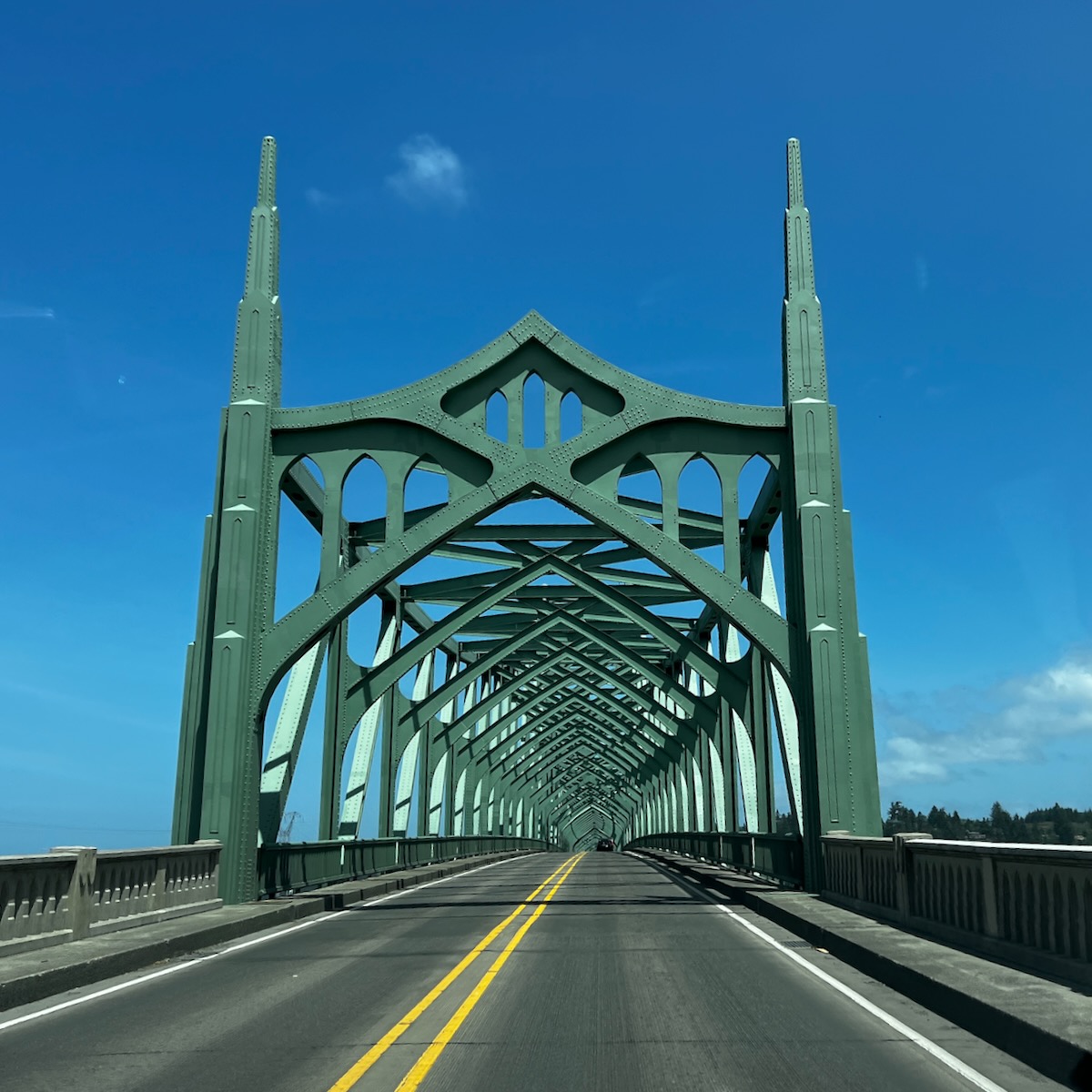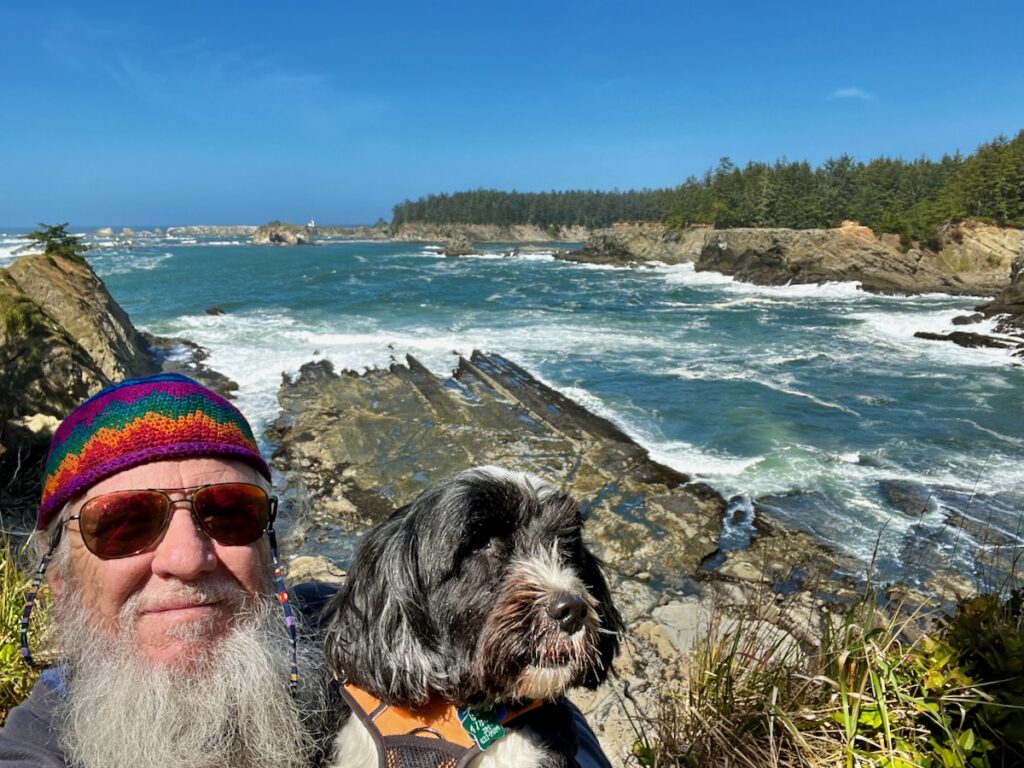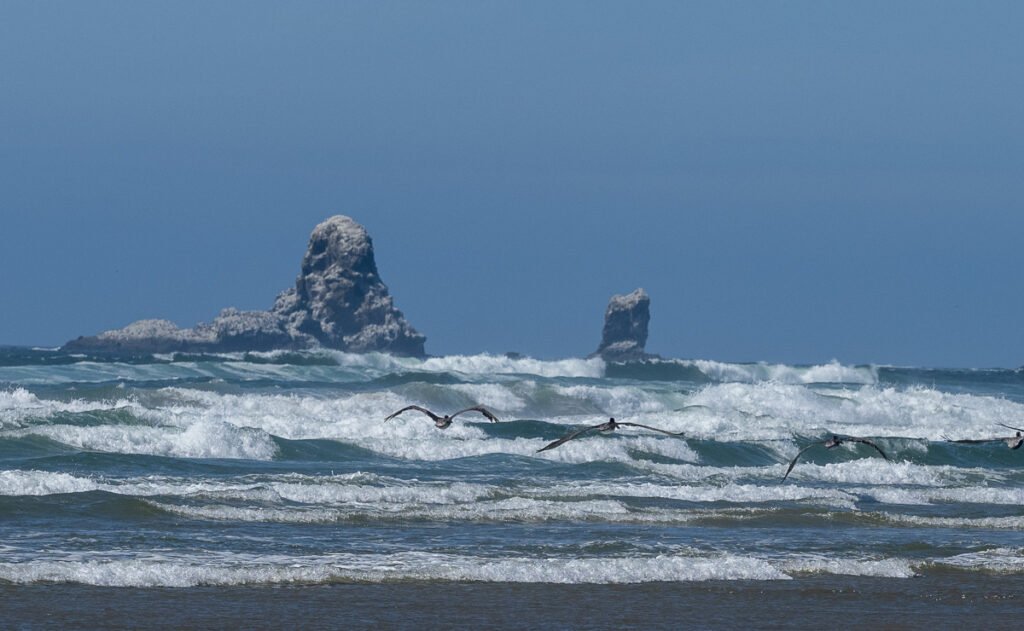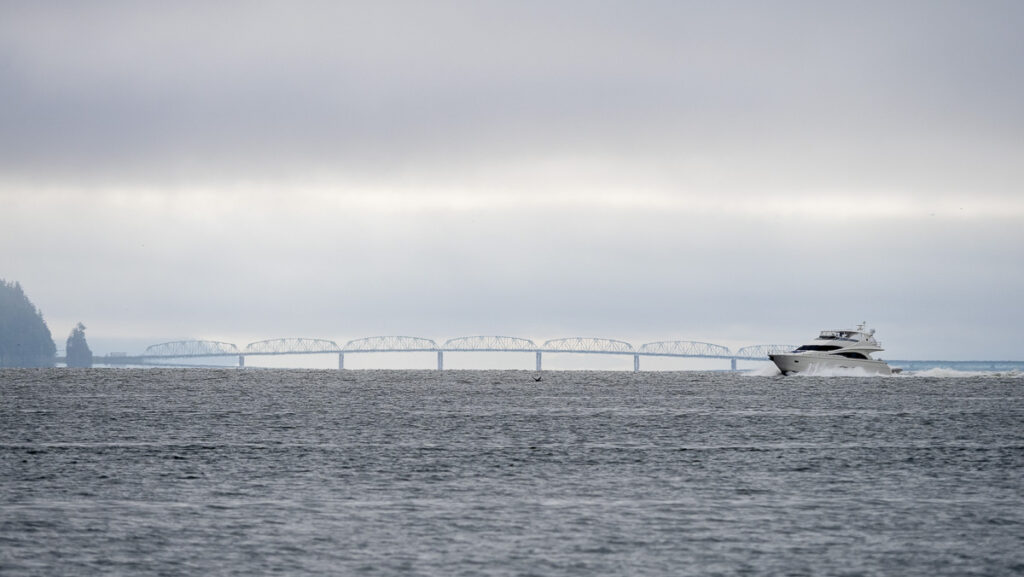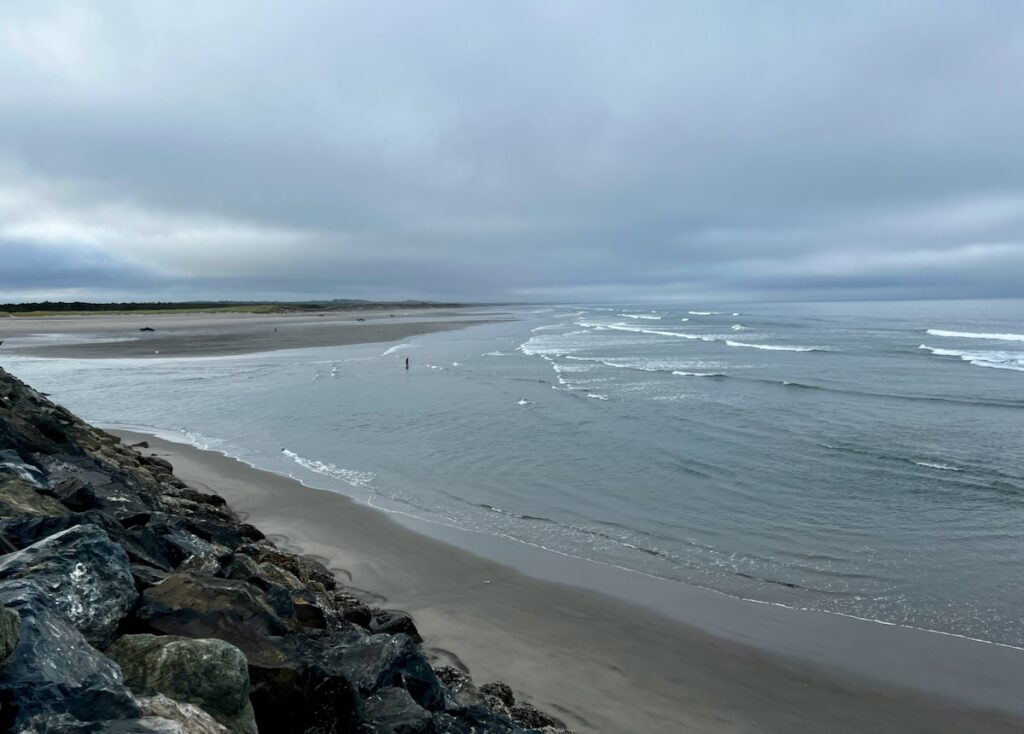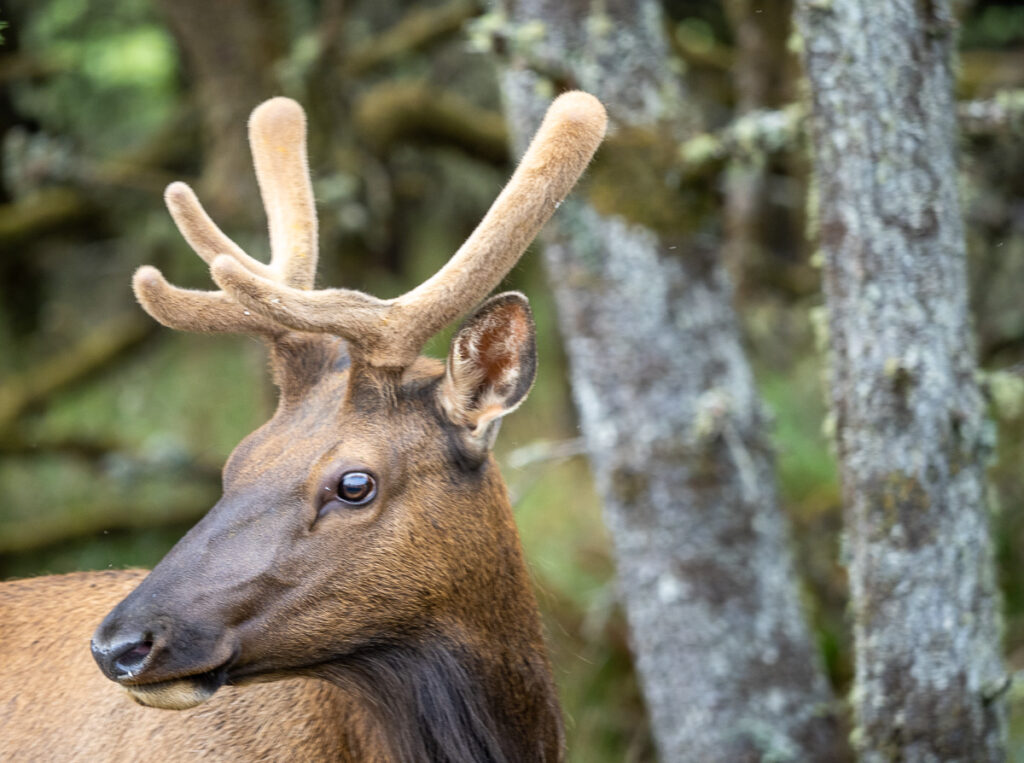After graduating in 1978, I drove to Seattle with my fiance up the coast. She hired on with Weyerhauser – a substantial forest products company, and I was going to graduate school. As part of her relocation package, they paid for us to come up to find a home. As we drove northwards through Oregon, we started seeing these cool bridges.

As a mechanical engineering student, one of the first classes you attend is Statics. The classic problem in statics is how to build a bridge. You spend all quarter learning about all the necessary considerations on how to design something (that does not move) so that it will not break.
So every time we drove through one of these beauties (see above), we would yell: Statics!
We left the Crater Lake area early to get to the coast. The first part was very windy and narrow but otherwise in good shape. It took us through some dense forests in the Southern Cascades. This dropped us into the heart of forest product companies. We passed a considerable mill where the trucks would be hoisted up 50 feet in the air to be unloaded. Amazing.
Eventually, we wound down into Coos Bay. The climate changed radically – the air was sweet with ocean smells and very windy. The town itself seemed very hip – herb dispensaries on every corner.
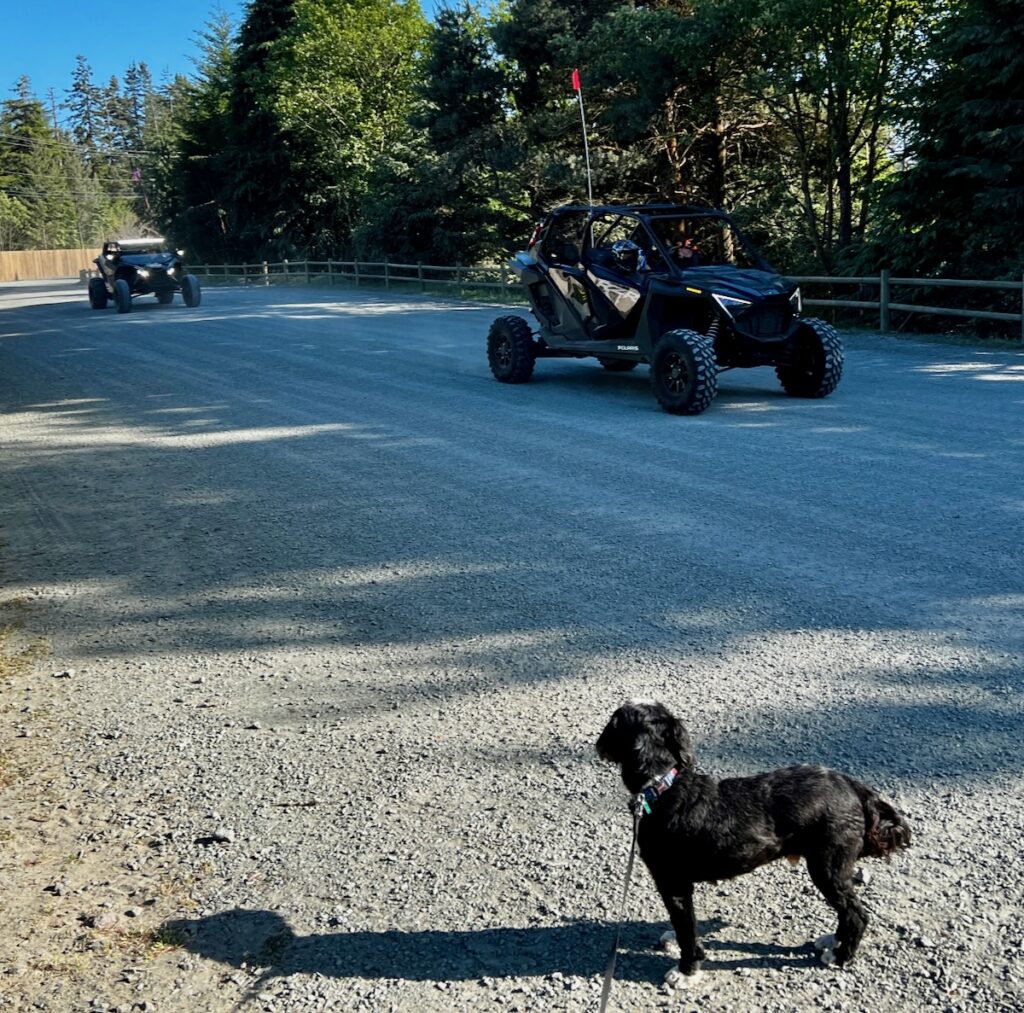
This led us to the campground for the night. It was a destination for dune buggy (and tRump) enthusiasts. With the dry gravel, wind whipping, and fucking loud and obnoxious dune buggies fuck all everywhere. Not one of my better picks. Very bad vibe.
Sunset Bay
However, the front desk attendant made a good recommendation for a state park about 15 miles away. The original destination was a botanical garden on the coast just south of the mouth of the bay. Sorry – no dogs allowed 😖! We chose option 2, which offered some excellent photo ops of the coast. This is what I was looking for in California. Fewer trees here!
We first stopped at the beach. Jake had a blast, as usual, checking out the new smells.
We then found a parking place for a path that led out to a stunning view of the beach. I got some shots of the enormous waves crashing into the rocks below.
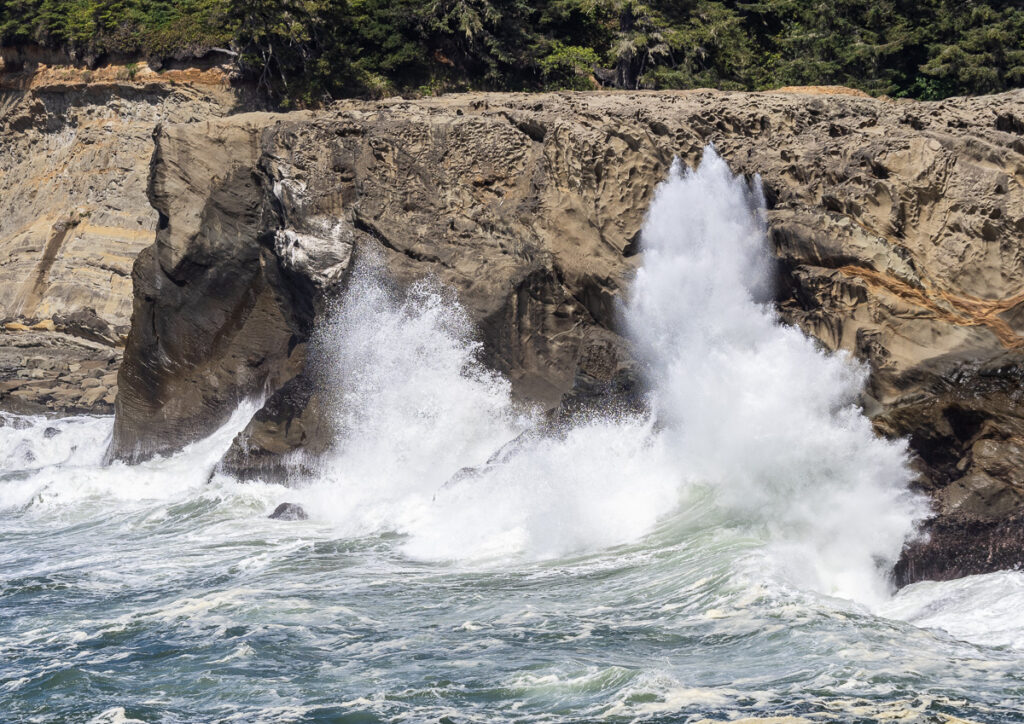



Bozos
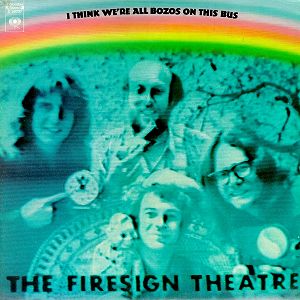
When I was in High School, we sat around, got high, and listened to Firesign Theater. They were sort of the National Lampoon of Radio Theater. With classics such as Porgy Tirebiter and Nick Danger: Third Eye, I still listen to them 50 years later.
For some reason, I have always had a powerful association with driving up the Oregon coast that summer, listening to their 1971 recording We’re All Bozos on This Bus.
With classic lines such as:
Mr. President! Mr. President! It’s the cockroaches! They’ve been sleeping with my wife!
Petitioner Clem to an AI version of Richard Nixon
It’s weird, but I think of the other every time I think of one. Too many drugs, I suppose!
It seemed fitting as this place was crawling with Bozos. Stupid people educated by Facebook and Fox News! We got out of Dodge as soon as possible and headed up the coast!
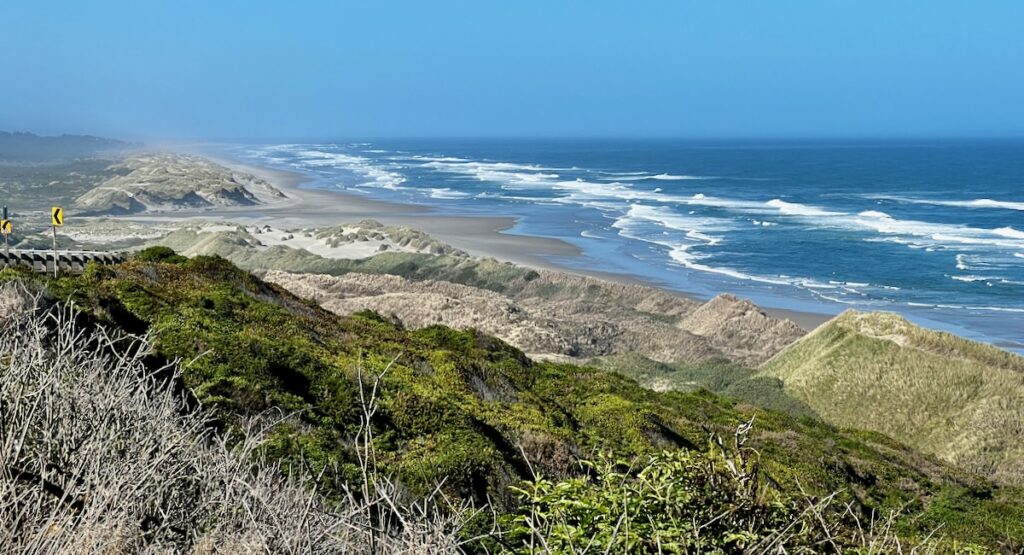
We had our earliest start – 7 AM – and made a 10-hour journey north. We stopped frequently to enjoy the sights, take a walk or explore the beach.
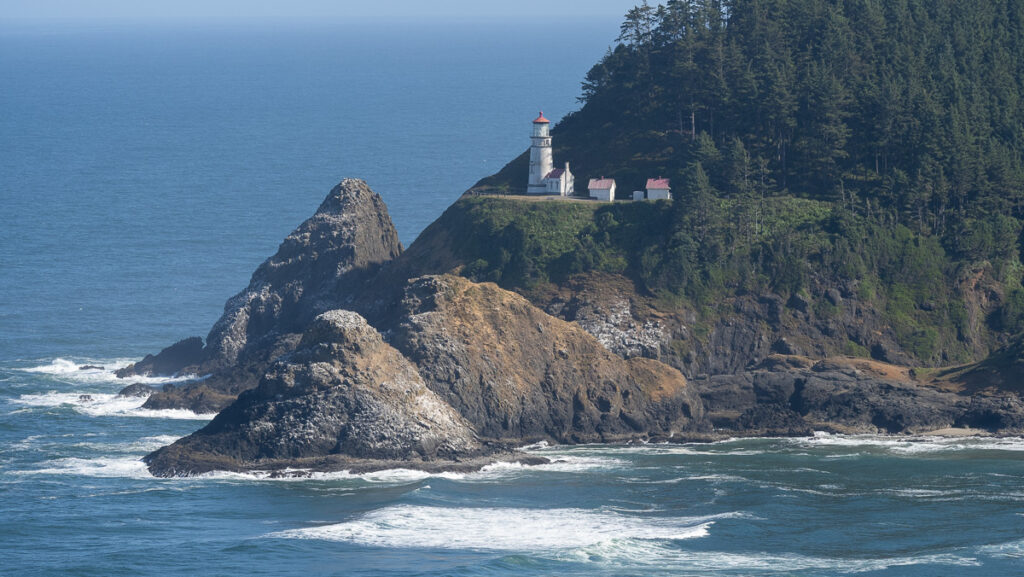
Several sections of the drive were spectacular, hugging the side of a mountain with shear drops to the Pacific below.
We made the mistake of exploring Connon Beach – not that there is anything wrong with the town except it’s crowded with tourists 🤣 – like me. Except they weren’t pulling an RV! I tried to get out of town only to find the exit inexplicably closed. I had to backtrack through the crowds of cars and people to get back on course!
We made it to the RV park after 4 PM. Dozens of volunteers warmly greeted us at this vast and well-featured park.

Fort Stevens
Early the following day, we drove as far north as possible to Fort Stevens.
The sandy beach provided a panoramic view of the mouth of the Columbia River.
The mouth of the Columbia (the Columbia Bar) has the reputation of being the most dangerous crossing in the world, earning it the title Graveyard of the Pacific 🧐.
We also made a stop to see The Wreck of the Peter Iredale.
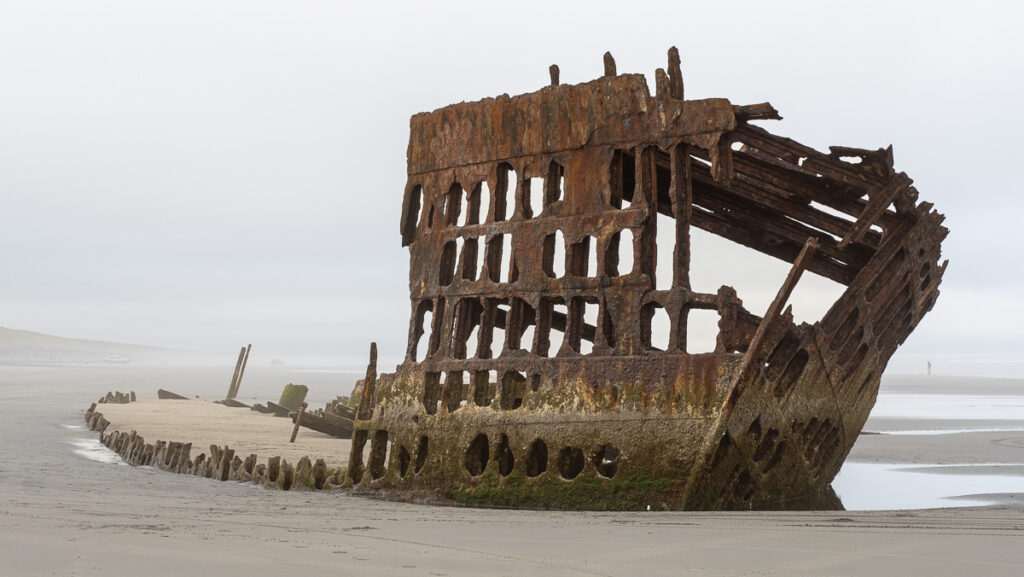
We were surprised to see a young Elk grazing nearby the road on the way out. In the act of sheer serendipity, my camera was out and ready with the zoom lens! What a handsome young lad!
To complete a great morning’s walk, we got another stunning wildlife shot while exploring the wreck.
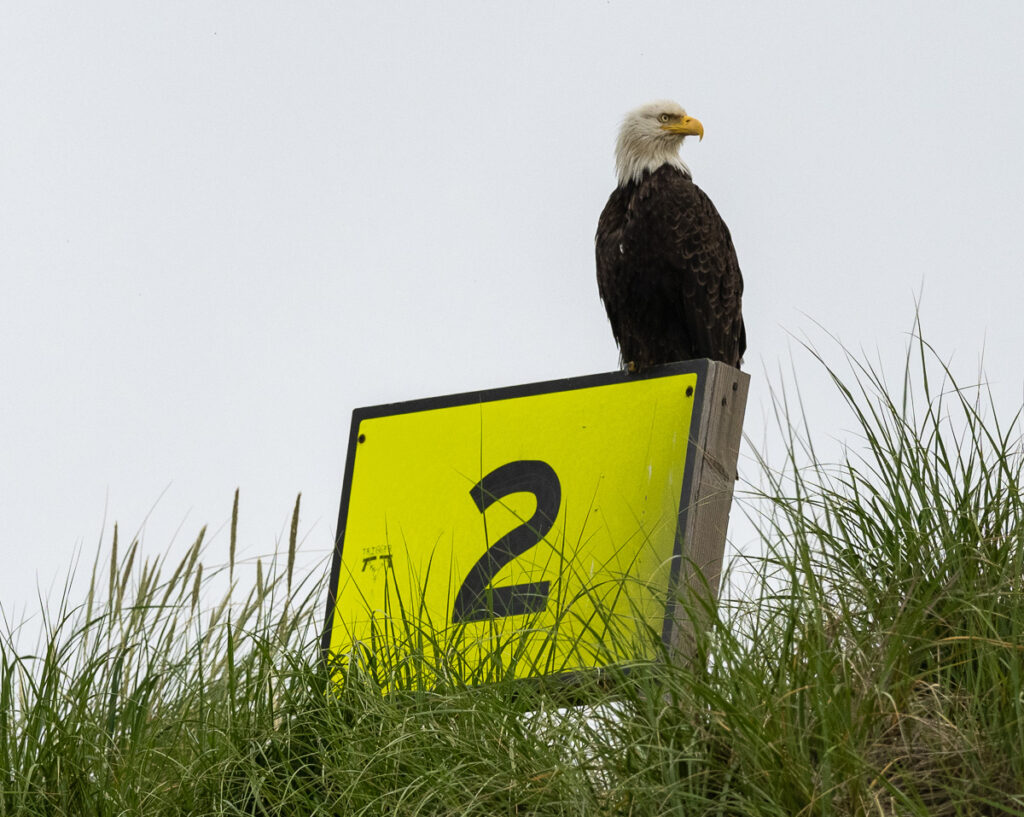
Columbia River Maritime Museum
On the recommendation of my brothers, I paid a visit to the museum in Astoria. As a bonus, a Coast Guard Cutter was making port after being out at sea for an extended period. It was great to see the families waiting for their loved ones.
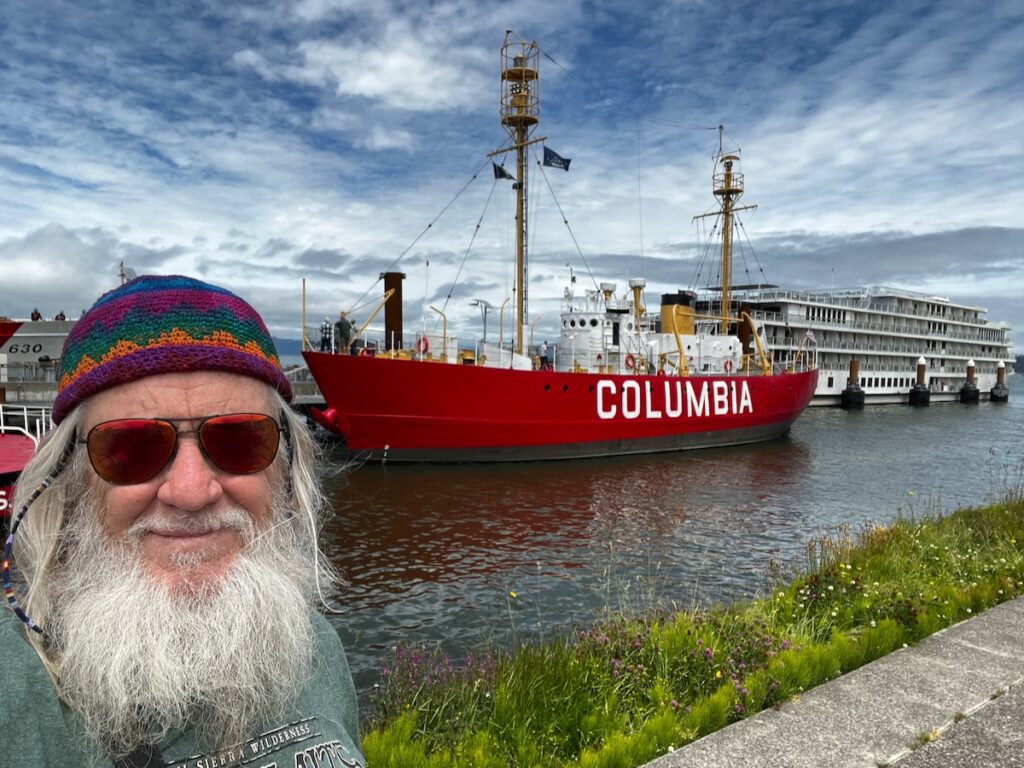
As part of the tour, I visited an old Lighthouse Boat. Named after the river she protected, she was in service for about 40 years before retiring in the early 1960s. I learned in the museum how the entrance to the river earned the name Graveyard of the Pacific. Nearly 200 ships have been lost, including the one I saw in the morning.
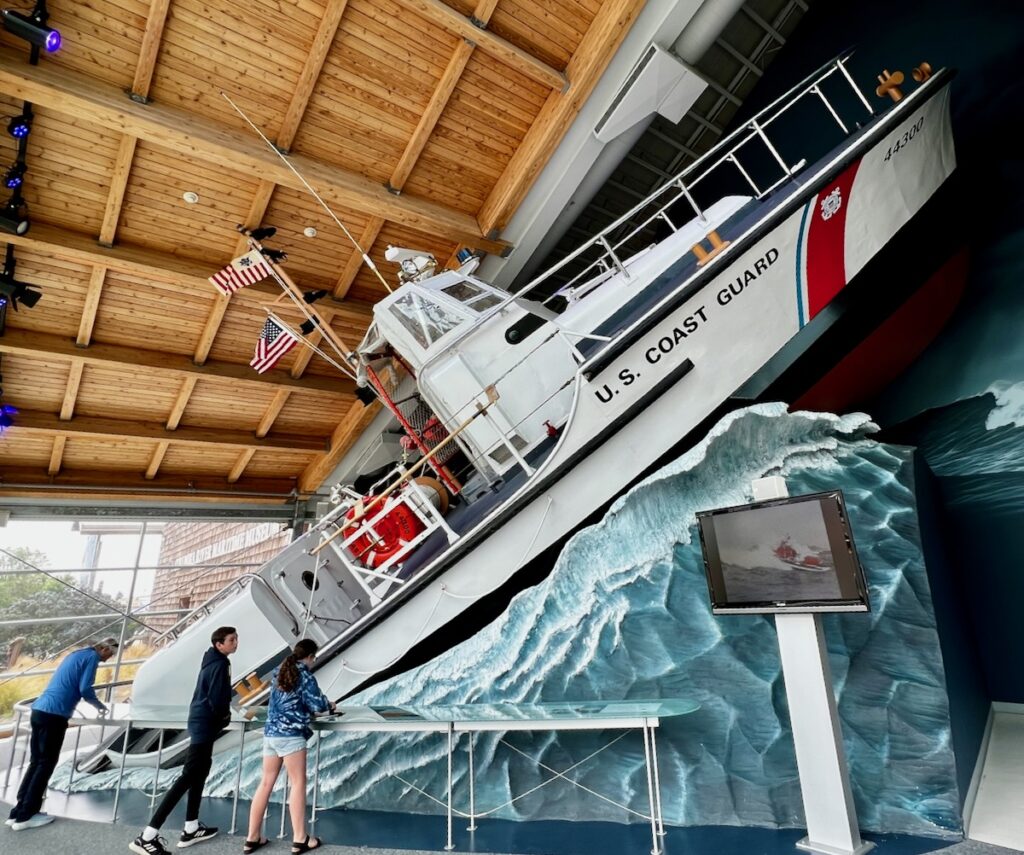
The displays at the museum were first-rate – incredible boats and recreations of daring Coast Guard rescue in unbelievable situations.
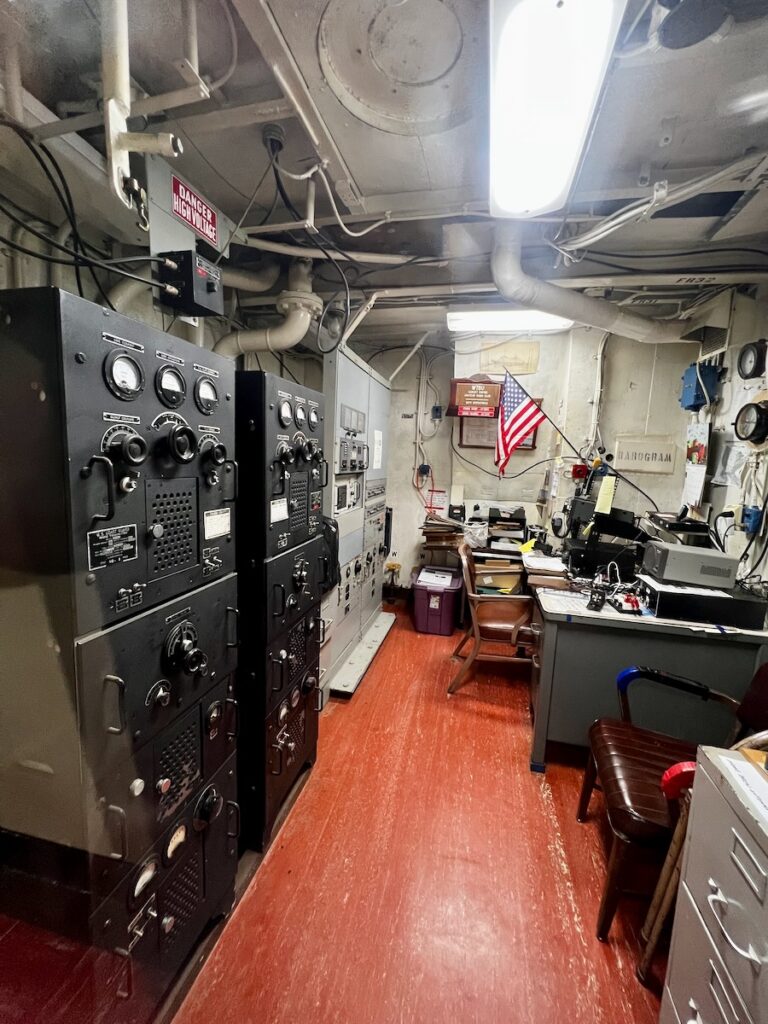
I also stumbled across a fascinating and oddly moving exhibit on the Japanese soldiers in WWII.
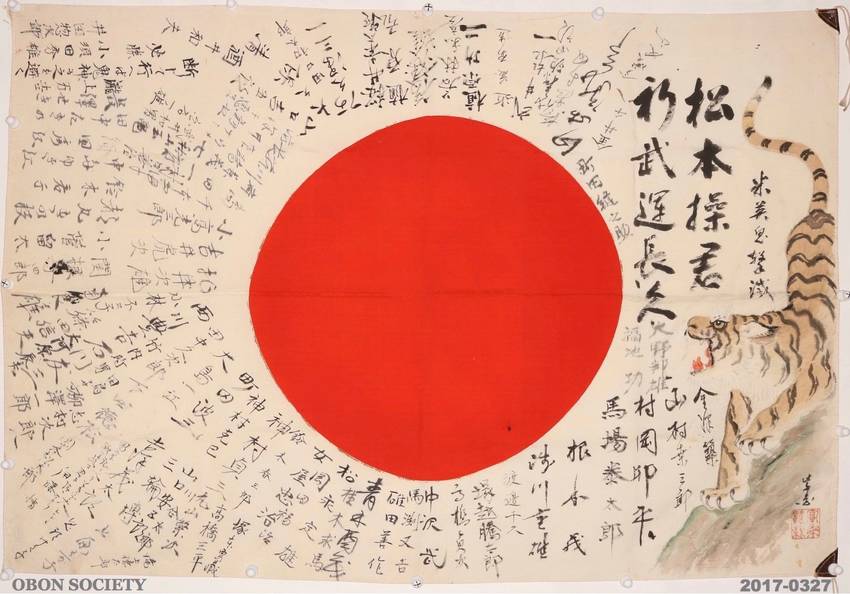
In World War II, Japanese soldiers carried a very personal memento into battle: Yosegaki Hinomaru. These flags, covered with signatures and well-wishes for a safe return, were given by family and friends to the soldiers as they were sent off to war. American soldiers in World War II collected flags from the bodies of Japanese combatants to take home as souvenirs. Now, decades later, many veterans and their families are realizing that these flags might be the only tangible evidence of a beloved family member lost in a war fought long ago. Although these Japanese soldiers never saw their families again, their flags are now returning home with the help of a group dedicated to helping bring closure. (from the museum website)
Peace Out ☮
Tomorrow we leave Oregon and head back to my old home state of Washington. The weather forecast says it is supposed to rain while I visit the Hoa Rain Forest. Seems fitting!


